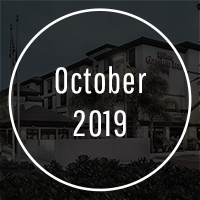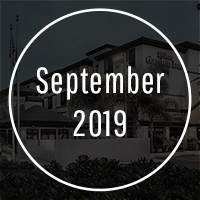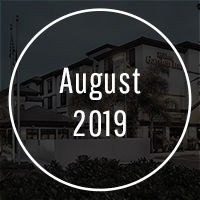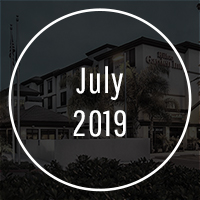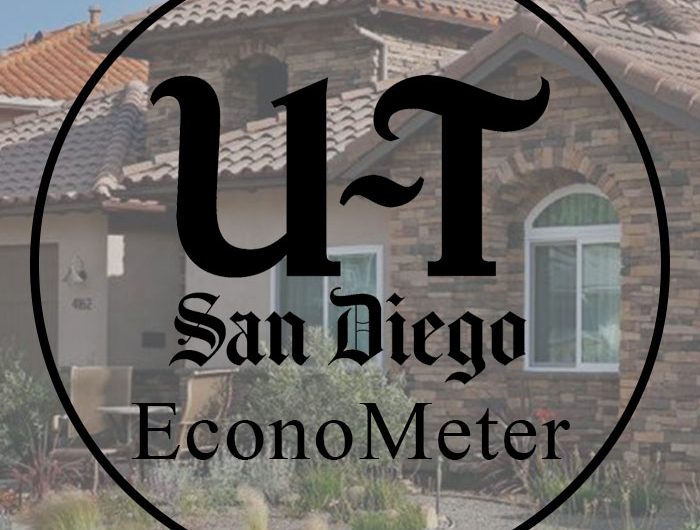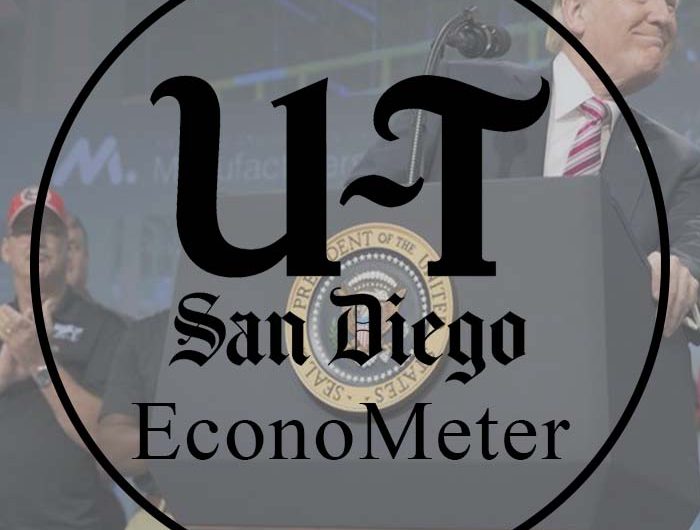The RAR Story
By Robert A. Rauch, CHA
In 1974, I attended the University of Illinois as an English major. I had recently dropped out of Pre-Optometry at Indiana University and my father had said, “I don’t care if you major in English, just go back to school!” Ok, dad, I figured, English it will be, but I am transferring next semester to another school. It did not take long for me to realize I needed to make a living now that I was paying for school. An ad in the school newspaper read, “Banquet Dishwashers Needed for Convention Hotel.” I applied and was told I was overqualified. I said, “What? I’m 20 years old and need to work. Plus, I speak Spanish! Does that help?” I was hired immediately.
The job lasted less than one month before I was promoted to busboy, then waiter and within six months, Banquet Captain. I loved serving guests and thought I was smarter than my managers. Pretty soon, bored with English, I set my sights on hotel school. Transferring to Florida International University, I met professors with real hotel and restaurant experience and found a job as a Sales Manager at an airport hotel. I received job offers from 4 international chains to start in their management training programs and chose Ramada Hotels. I can assure you, my stints in the field were not all roses. I was transferred several times with hopes that I would eventually help the company and learn from my many mistakes.
I began to have success over the years and eventually became a General Manager. After that, I landed a position as Director of Education & Training at Best Western International and finally, with what is now Deloitte, I served as a manager in the Phoenix office hospitality practice. It was there on a July 4th weekend in San Diego that I met my wife and decided to settle down in San Diego and start what is now RAR Hospitality. We started the company as R. A. Rauch & Associates because my friend Rick Zurburg, then of Holiday Inn University, told me to use my name rather than invent some company called Hospitality Consultants or something vague like that.
The week after I moved to San Diego, we started the firm— 16 years after I started with Ramada and 30 years ago as of January, 2020. I was the only employee for quite some time until my wife turned on the light in my head by saying, “Do you realize how many millions of dollars you have been making for your clients?” She said, “Why don’t we buy a hotel?” I replied, “With what money?” We put our heads together and came up with a list of relatives who might have $50,000 to invest. This was January of 1997. I found an owner of a beat up 52-room motel near the beach and offered him $2M for his hotel. His property was run by staff that took the easy way out. Prostitutes and drug dealers would rent the rooms out; they pay cash and require no marketing.
We took over on July 1, 1997. I evicted every guest by slipping a note under their door that essentially said, “We have purchased the Ocean Inn and rates are no longer monthly. Daily rates are $79 (it was $29 at the time) and you are welcome to stay at that price along with a valid credit card and driver’s license.” To put it lightly, they were unhappy, but left. The hotel filled up for two straight months after we deep cleaned all the check outs. I had to pay housekeeping a bit of overtime and had to help out. The turnaround took 2 days of cleaning and by July 3rd it looked like new. On September 2nd, the day after Labor Day, the hotel parking lot was empty. That was a wake-up call that the beach cities location was only a home run during summer—significant marketing would be needed for the fall, winter and spring!
Digital Marketing
By September 5th, we contacted my friend Lynn Mohrfeld, now President and CEO of the California Hotel & Lodging Association who was with WorldRes, a company that provided real time electronic reservations. Yes, it was 1997 and by the end of the year, our 52 unit “boutique hotel” – yeah, right, it was a glorified motel, was 2nd in San Diego County in online reservations. First was the Hotel Del Coronado, with 692 rooms at the time! My wife had worked reservations for Holiday Inn, so she handled all reservations. She was tech-savvy enough to create an electronic newsletter (we still use the format today) and she handled the communication with WorldRes. We created “bounce-back” style content and had a frequent guest program. We served a really cool, European-style breakfast designed by one of our investors who I had worked with at Hyatt and Hilton named Jerry Brooks. We eventually hit our budget numbers right on target and in June of 2000 got an unsolicited offer to sell the property.
Development 101
Our next plan was a decision on the money. Distribute the profits and have everyone take a tax hit or invest via 1031 exchange. We invested in a piece of land found originally by a friend, Bill Canepa, but he rejected it because his business partner preferred something on the water. When my wife, Linda saw the land among 10 other pieces of property we looked at, she said this is it. Today, it is a dual-brand campus of Homewood Suites by Hilton and Hilton Garden Inn. We endured 9/11 when our bank backed out of our construction loan and a fire that burned our Garden Inn to the ground just before opening. There were times during the development when I wondered how many years I would have to work 80 hours per week just to make ends meet. But sometimes it just takes the right partner. Joe Simone joined us as my partner and we are still together—he has his hotels that he continues to build and I went on to build a management company, RAR Hospitality.
RAR Hospitality
This firm was built as an owner-operator but quickly morphed into a strong third-party hotel management company. The first hotel to manage for others was El Cordova Hotel in Coronado. That hotel ran about 45% occupancy in 2009 at a rate of about $150. While we are not quite double those numbers (90% at $300), it is not unrealistic to believe that it will get there soon. Other hotels that we managed along the coast were the Pantai Inn La Jolla and Pacific View Inn Pacific Beach (both were sold at large profits by their respective owners). After those hotels, we added the Lafayette Hotel, Carlsbad Inn by the Sea, Four Points by Sheraton Kearny Mesa, the St. James Hotel and the Keating Hotel.
We came full-circle when we began acquiring hotels in Arizona when the market was at the bottom. The first hotel acquisition was made with a young, former Disney executive named Cameron Lamming. Cameron and I met when he was with Brixton Capital who wanted to acquire what is now the Doubletree Hotel in Phoenix, Arizona. We just hit it off and acquired three more Arizona hotels and began to develop more hotels together. Cameron is now the President of RAR and will lead us forward for the next 30 years while I back off the 80-hour work week and play a bit more golf. We have put together a team that includes some of San Diego’s top hotel talent:
Vikram Sood, Senior Vice President of Operations, Dari DeSousa, Corporate Director of HR, Cindy Park, Corporate Director of Accounting, Frank Bewley, Corporate Director of Revenues, Michael DeJesus, Corporate Director of Marketing, and Sarah Andersen, Corporate Director of Business Development make up a top tier of executives with skills as strong as any in the business. Our managers that support them are rock stars and while the job market makes it tougher, we have a very talented staff throughout the organization.
Today, RAR Hospitality is planning a 30th anniversary event on February 20th, 2020. Our plans for the next 30 years include alliances with firms in the eastern U.S. so that we can effectively grow and scale. My business partner, Cameron is ready to take the lead and I am ready to help grow and scale the company from a business development perspective. I still love our hotels, team members, guests and industry so I will continue to write, speak, do deals and stay highly active. It’s just time to pass the mantle of day-to-day operations to a great team that is ready.
Econometer: Is the jobs report a sign the recession is near?
Bob Rauch, R.A. Rauch & Associates
NO: Consumer confidence remains strong, employment and wages are up and while there are trade war concerns, this economy would need a confluence of negative events to fall into recession. Low oil prices, coupled with low interest rates and strong consumer spending, bodes well. The next 12 months are solid albeit with an economy that is slowing. An interim agreement on trade will remove uncertainty and boost the economy with GDP up 2.2 percent in 2020.
Full the full article by Phillip Molnar, click here.
25th Anniversary of the Lodging Conference was a hit!
Last week at the Lodging Conference, Harry Javer and his wife Liz put on a fantastic program at JW Marriott’s Desert Ridge Resort. I have always enjoyed this conference as my favorite for many reasons – weather, laid-back vibe, approachability of attendees, food and beverage quality and more. For a brief rundown of events, here is a short overview of some takeaways:
The Economy
My favorite economist, Bernie Baumohl, was spectacular as usual. Bernie started off with posing the question, “How many more blows can this cycle take? In this pivotal moment, the numbers still look good. Employment is strong, wages are growing, inflation is quiet, interest rates are low, there is plenty of capital, but worries are more prevalent that we are peaking.
”
According to Mr. Baumohl, it is extremely difficult for this economy to fall into a recession because it would require a confluence of negative events. Interest rates have driven us into recessions before, but the Federal funds rate minus inflation is negative, which is good.
Geopolitical eruption could spike energy costs, but he does not see that as a pertinent threat. Oil is still under $60/barrel and will not likely cause a recession unless $100/barrel is sustained for two months.
The biggest concern now is a trade war. If the manufacturing sector is starved, the construction and hospitality industries would hurt from a slowdown in furniture production or tourism from China. According to Baumohl, “The Fed really cannot help now. It is removal of uncertainty that will help. The geopolitical pot is boiling furiously, the eye of the political storm due to 2020 elections is coming closer and hence, there are 3 most likely occurrences:”
Slowing economy, an interim trade agreement that might boost the economy for elections, GDP up 2.2% for 2020, 1.6% 2021. (50% probability of this)
Hostilities erupt in Middle East/Asia, 1.8% GDP growth, 2.4% in 2020 (30% probability)
The consumer will continue to spend in their pajamas online, but with higher delinquencies, ecommerce stimulates activity quickly and the job market is still strong despite the pace of the economy. Increases in GDP of 3%. (15% probability)
Other scenarios 1% each
Bauhmohl feels that AI, blockchain and robotics will not destroy jobs and that inflation will stay down due to forces keeping prices down; e-commerce is a deflationary force. Half of the world population has internet access, making this a booming business.
New orders have dropped according to the Institute of Supply Management (ISM) below 50, with the service sector stronger than manufacturing. A decline of Chinese visitors and a trade war are hurting tourism! President Trump needed to show his constituents strength, but perhaps we should not have gone up against China one on one. The Trans-Pacific Partnership (TPP) would have helped according to Baumohl due to 12 nation participation without China. We could have brought them in later.
Xi might be President of China forever, so to speak, but he has to deal with protests in Hong Kong and more. Will President Trump shift to China hawks or moderates? China has a hybrid mix of capitalism and communism. Bottom line for the economy? No recession!
Lodging Industry
Bruce Ford of Lodging Econometrics led the discussion by letting us know that the pace of supply growth is down this year. That is good news! Vail Ross of STR let us know that we have had 112 of the past 114 months of positive RevPar growth. To let us down a bit, she mentioned that we have just had 4 quarters of negative ADR growth relative to inflation. 2019 will finish with 1.6% RevPar growth and in 2020 supply will outpace demand with ADR up 1.4% each year.
Ben Bates of Booking.com mentioned that 69% of Gen Z travelers have a bucket list and that 1 in 3 Gen Z travelers will be making a solo trip. The takeaway was, “Are you visible online for solo trips?” Mark Lomanno of Kalibri Labs mentioned channel mix, distribution mix, the decline in property direct to 28% over the past 5 years and the continuation of that decline. Brand.com is growing, channel costs are growing, but OTAs are growing twice as much as others. This is a challenge for hoteliers as costs grow faster than ADR.
HVS executive Adam Lair said that transactions are down and there is more uncertainty, but cap rates are flat. Sellers continue to demand peak pricing, but slowing RevPar growth and higher expenses decrease value. This begs the question, will investors reduce return requirements or will prices decrease? Mark Woodworth of CBRE stated that economic policy uncertainty and lower RevPar growth is not helping us and that 25 of the 60 markets CBRE tracks have increases in supply.
Bottom line on lodging industry performance? Continued slowing RevPar growth led by ADR. To a more impressive year in 2020!
Econometer: Is the yield curve change a sign of a recession?
Bob Rauch, R.A. Rauch & Associates
NO: Forget the yield curve unless it continues to be inverted over several months. The economy will likely perform well despite the global slowdown that we are currently enduring. The key to avoiding a recession is the consumer. Strong consumer confidence, continued low unemployment, low inflation and a solid Purchasing Managers Index will buy us another four quarters of modest growth. Election year economics may add another quarter.
Econometer: Would the United States’ economy be better in the long run by cutting ties with China?
Question: Would the United States’ economy be better in the long run by cutting ties with China?
Bob Rauch, R.A. Rauch & Associates
NO: The overall commercial relationship with China on the U.S. economy remains positive but a strong stance was needed to counteract China’s aggressive trade strategy. The U.S. cut the trade deficit through China’s purchase of large quantities of U.S. energy and agricultural products; strengthened intellectual property rights protection and enforcement and more. Now there will be a far more level playing field for trade with China. Time to cut a deal and move on.
For the full article by Contact Reporter, Phillip Molnar, click here.
HR Compliance
“My employees are doing fine”.
“The team is happy, they get along and talk all of the time”.
“I have really high employee survey scores, everything is great”.
Employees are satisfied…until they aren’t. If you have indicators of strong employee engagement, that is fantastic! Low turnover, good teamwork, positive vibe in the workplace – all great. This does not mean that we should forgo compliance audits because we think that everyone is happy, and no one would ever sue you.
All it would take is that 1 termination, that 1 person that decides to speak to an attorney. Then one conversation about unfair treatment also becomes a conversation about meal breaks, promotions, consistency and KABLAM, it all goes crazy.
What gets measured gets done is the adage. Same is true with compliance. If you audit, if you have solid recordkeeping and if you have accountability – then all of the items that you are tracking will get done. If you never check on things, if you never have mini-audits, then you really have no idea of your risk and exposure.
Many times, a smaller company will not have an on-site HR. Or even if you do have HR on-site, never assume that “all is fine”. HR Professionals can have varying degrees of experience, they could have been a specialist with a narrow scope of knowledge or they are new to your state and aren’t fully up to date on state specific laws (big challenge in CA!).
Performing HR Audits is a great practice to ensure strong, legally sound practices and procedures are consistently followed. Being compliant with the many state and federal laws just makes smart business sense. The financial consequences are just too high to ignore it or to not be engaged in the HR function.
A good rule is to ensure all owners, GMs, all leaders are ALL “HR Leaders”. They do not have to be fully versed in all employment rules, but they need to have an awareness of laws and rules and have enough knowledge to know when to call for support and help.
If you have no on-site HR, you can hire an HR Consultant to audit your business. Many HR firms offer this service. It is always better to have self-discovery and correction rather than issues to be discovered through a lawsuit or state/federal agency audit.
If you have on-site HR or are interested in creating an audit yourself, there are many websites that can offer templates for no or low-cost. They will at least get you on the right track. It may feel daunting to tackle a full HR audit in one sitting.
Breaking up the large audit and completing a manageable category once a week, or once a month may be more manageable. Don’t forget, in addition to the audit, you will be adding to the “to do” list along the way. As you discover opportunities, you should be fixing those items as you encounter them, with a focus on state/federal compliance as a top priority.
A few areas in which you should include in your HR Audit:
· Compliance (I-9, Confidentiality, Human Trafficking, CA (or other state) Sexual Harassment training, LOA processes, employee file, confidentiality files and Information Protection Agreements).
· Payroll (records retention, meal breaks (CA), accuracy of payroll, manual punch edits, split shifts, tip credits, service charges, Wage Theft notices (CA) and CA Sick Time).
· Wages and Benefits (wage scales, bonuses, 401 K compliance, incumbent wage reviews, Equal Pay Act).
· Risk (JSAs, MSDS, work comp processes, Housekeeping MIPP (CA) and IIPP)
· Talent Acquisition (lawful ads and job postings, consistent/lawful interviewing, records retention, onboarding and new hire paperwork).
Insights on the Ever-Changing Digital Marketing Landscape
By Sarah Andersen & Molly Sinclair
Facebook has changed
Facebook is still currently the #1 social media platform in the United States, with an impressive 68% of American users. Compare that to the 35% of Americans using Instagram, 29% using Pinterest, and 24% using Twitter, and it is clearly still a crucial component to every digital marketing strategy.
However, we are seeing some major shifts in social media platform usage as the dust from the 2018 Facebook data privacy scandal settles. Facebook data of up to 87 million people was improperly shared with the political consultancy Cambridge Analytica and the site removed 583 million fake accounts. In 2019, data privacy has moved front and center into the awareness of the average online user and there is little doubt that Facebook has recognized this increased expectation for more control over who uses our data.
How has this affected the digital marketing landscape one year later for the hospitality industry?
– Video marketing, mobile adaptability, and mobile apps have now become the center of attention for digital marketers. YouTube just replaced Facebook as the second-most popular website globally, while Google remains first. Stay current by including short clips under 1 minute within your strategy,
– “Stories” on Facebook, Instagram, and Messenger are taking the spotlight from regular posts. Be sure to include stories in your campaign in 2019, and you do not have to worry about oversharing too many posts.
– There is a shift on Facebook regarding demographics as the platform continues to trend downwards with younger demographics. Keep your attention focused on your target market to have the most success in your campaign.
– Instagram, the image and video-based social media platform owned by Facebook, is optimized to make it very easy for users to share photos and videos from their phone. Hotels need to focus on creating visually engaging content to catch the attention of all demographics.
Reputation Management Score
Everyone is now reviewing, all the time. Sites like Booking.com, Expedia.com and TripAdvisor have made it easy for guests to rate their latest night’s stay. With that, more and more travelers are checking reviews before making a booking and they base a large part of their decision on the hotel’s reputation. According to New York University and TrustYou, the inventor of the Meta-ReviewsTM and global online reputation management leader, 95% of respondents report reading travel reviews prior to booking. These reviews are an integral part of the purchase so it is necessary to first understand what is being said about your property online, as well as actively improve your hotel’s reputation.
How can digital marketers increase their reputation management score?
– Before adopting any kind of marketing strategy, it’s important for hoteliers to thoroughly analyze past performance and experiences, especially from a guest’s point of view. There’s no better way to anticipate what the next guest will react positively (or negatively) to than to analyze the opinions of past ones.
– Take the time to respond to both good and bad reviews. Responding to negative reviews may redeem your hotel in the eyes of the reviewer and other potential visitors reading old reviews. Responding to positive reviews not only encourages loyalty and turns those guests into brand ambassadors, but it also leaves a good impression on other prospective guests scrolling through old reviews.
Social Media Management
In an information age where data can quickly become overwhelming, people have to pick and choose where their attention lies. Marketers have been using social media platforms like Twitter, Instagram, and Facebook to promote their businesses for years now, and if managed correctly, can work fantastically for promoting hotel business. However, these days, many marketers find their organic growth from social media is stagnant. Every new discovery or algorithm update has the potential to impede on our ability to connect with our guests.
How can digital marketers get guests to stop and look at what your hotel has to offer?
– Use high quality photos. Aesthetically pleasing photos are better than an event flyer, for example.
– If you’ve ever taken an art class or have read anything about photography composition, then we’re sure you have seen something about the rule of thirds. An image should be imagined as divided into nine equal parts by two equally spaced horizontal lines and two equally spaced vertical lines, and that important compositional elements should be placed along these lines or their intersections. Doing so creates more tension, energy and interest in the photo than simply centering the subject.
– To avoid potential guests seeing your photos in low-res, upload files with at least 1000 pixels on the long side. Upload to Facebook with a minimum of 2000 pixels on the long side should someone want to view your posts on a full screen.
– To make your images ‘pop’, without over-enhancing them, try altering shadows, highlights, and vibrance.
– Update rooms, amenities, meeting space, lobby photos at least every 5 years. Updating these photos will keep your hotel fresh and current in the eyes of the guests. If you make any improvements or renovations, update them right away!
Using these current digital marketing practices will give your hotel the opportunity to get your content seen, leading to more bookings. Good luck!
Econometer: Will housing market slowdown soon be over?
Question: Is the slowdown in the housing market a temporary blip?
Bob Rauch, R.A. Rauch & Associates
NO: The slowdown is real as each sector of real estate goes through cycles and we are getting toward the end of a long, prosperous cycle. Growth rates will continue to slow but can be stimulated with interest rate reductions. Ultimately, a recession or correction will flatten growth to zero or below and we will have an opportunity to buy at the new bottom and grow again. San Diego is a long-term winner.
For the full article by Contact Reporter, Phillip Molnar, click here.
Econometer: Could rising wages be coming to San Diego?
Question: Could rising wages be coming to San Diego?
Bob Rauch, R.A. Rauch & Associates
NO: It is likely that the jobless rate is at or near the bottom. Wages have been increasing from minimum wage on up through the ranks over the past eight years. According to Moody’s Analytics, San Diego is at risk for having increased unemployment rates between now and 2023, more than most other major U.S. markets. This is based on their algorithm that includes gross metro product, housing, population growth, employment and personal income growth.
For the full article by Contact Reporter, Phillip Molnar, click here.







